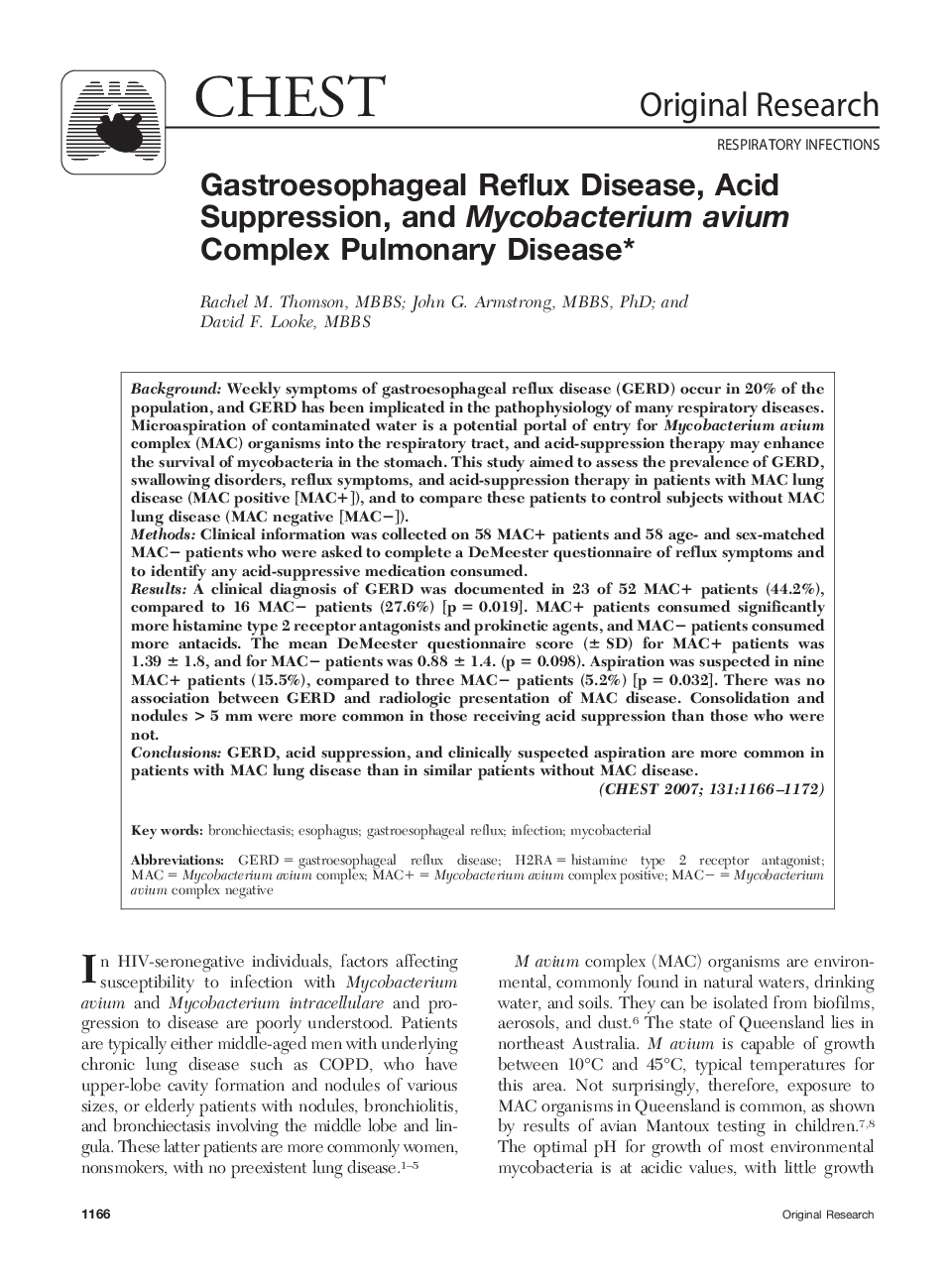| Article ID | Journal | Published Year | Pages | File Type |
|---|---|---|---|---|
| 2905057 | Chest | 2007 | 7 Pages |
BackgroundWeekly symptoms of gastroesophageal reflux disease (GERD) occur in 20% of the population, and GERD has been implicated in the pathophysiology of many respiratory diseases. Microaspiration of contaminated water is a potential portal of entry for Mycobacterium avium complex (MAC) organisms into the respiratory tract, and acid-suppression therapy may enhance the survival of mycobacteria in the stomach. This study aimed to assess the prevalence of GERD, swallowing disorders, reflux symptoms, and acid-suppression therapy in patients with MAC lung disease (MAC positive [MAC+]), and to compare these patients to control subjects without MAC lung disease (MAC negative [MAC−]).MethodsClinical information was collected on 58 MAC+ patients and 58 age- and sex-matched MAC− patients who were asked to complete a DeMeester questionnaire of reflux symptoms and to identify any acid-suppressive medication consumed.ResultsA clinical diagnosis of GERD was documented in 23 of 52 MAC+ patients (44.2%), compared to 16 MAC− patients (27.6%) [p = 0.019]. MAC+ patients consumed significantly more histamine type 2 receptor antagonists and prokinetic agents, and MAC− patients consumed more antacids. The mean DeMeester questionnaire score (± SD) for MAC+ patients was 1.39 ± 1.8, and for MAC− patients was 0.88 ± 1.4. (p = 0.098). Aspiration was suspected in nine MAC+ patients (15.5%), compared to three MAC− patients (5.2%) [p = 0.032]. There was no association between GERD and radiologic presentation of MAC disease. Consolidation and nodules > 5 mm were more common in those receiving acid suppression than those who were not.ConclusionsGERD, acid suppression, and clinically suspected aspiration are more common in patients with MAC lung disease than in similar patients without MAC disease.
